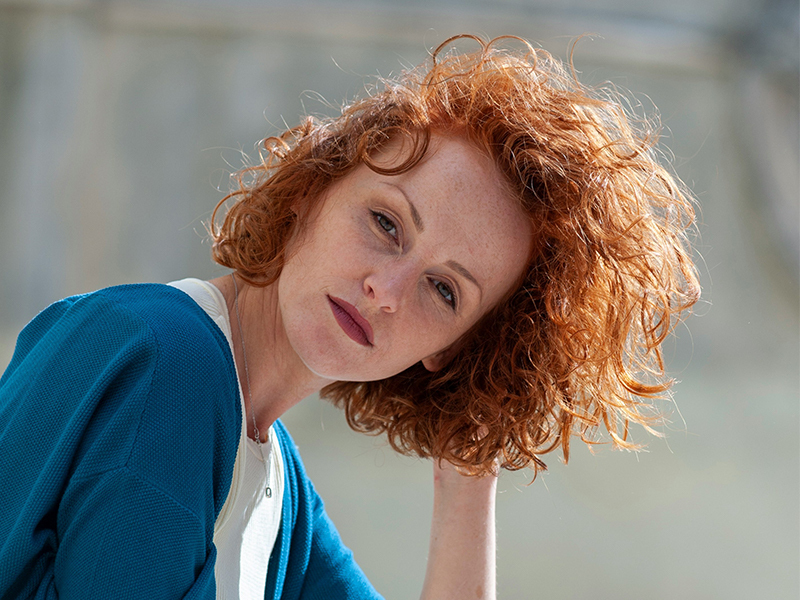
Hair Loss in Women Isn’t Uncommon, But It Is Underdiscussed
Hair loss. Too often, it’s viewed through a male lens. Think receding hairlines, balding jokes, or assumptions about ageing men. Yet millions of women around the world face their own version of this struggle, often silently.
If your parting seems wider than before, or you’ve noticed more hair in your brush or on the pillow, you’re far from alone.
Up to 40% of women experience visible hair thinning by the age of 40. And for many, it’s a deeply personal concern. One that impacts confidence and wellbeing.
At the International Trichology Society (ITS), we believe that accurate information and access to trained professionals are key. Here’s what every woman should know about hair loss, and how trichologists can help.
Female Hair Loss: Causes and Characteristics
Hair loss in women frequently presents as diffuse thinning across the scalp, rather than the more localised patterns often seen in men. This can make early detection more difficult but no less critical.
Common Causes Identified by Trichologists
- Hormonal fluctuations (e.g. menopause, postpartum, PCOS)
- Genetic predisposition (female pattern hair loss)
- Iron deficiency or other nutritional gaps
- Thyroid disorders
- Excessive stress or illness
- Hairstyling damage (traction alopecia, heat or chemical overuse)
Because causes are often multifactorial, qualified trichologists perform a thorough assessment, considering health history, lifestyle, and scalp condition to reach an accurate diagnosis.
For a closer look at the different types of hair loss, you may find this article Things You Should Know About Alopecia helpful.
The Trichological Approach to Female Hair Loss
A trichologist’s strength lies in combining science with a personalised care model. Treatment begins with a comprehensive consultation, scalp examination, and, where necessary, diagnostic testing such as blood work or microscopic hair analysis.
Personalised Care Plans May Include:
- Topical solutions to stimulate growth and reduce inflammation
- Nutritional counselling and supplementation
- Scalp therapies including exfoliation, hydration, or massage techniques
- Low-level laser therapy (LLLT) to support follicle health
- Stress management strategies and referrals when appropriate
This multifaceted approach allows for long-term success without quick fixes or one-size-fits-all prescriptions.
Hair Restoration: When Trichologists Recommend Surgical Options
When non-surgical options are not sufficient, trichologists may recommend hair transplant procedures, most often Follicular Unit Extraction (FUE).
How FUE Works for Women
- Individual follicles are harvested from the back or sides of the scalp
- These are implanted into areas of thinning
- Minimally invasive with no linear scarring
- Results integrate naturally with existing hair
While trichologists themselves do not perform surgical procedures, they play a vital role in identifying candidates, preparing the scalp, and supporting recovery post-treatment.
Recovery and Ongoing Support
Women often worry about downtime. Fortunately, most resume regular activities within a few days after hair restoration treatments, depending on the method.
Trichologists remain involved after any intervention, tracking progress and adjusting treatment protocols. For example, results from FUE typically appear within 6 to 12 months, and complementary therapies such as PRP or LLLT may be recommended along the way.
Early Intervention is Key
Early detection offers the best opportunity for successful outcomes. If you suspect hair loss is beginning, even if it seems mild, consult a trichologist. Prompt intervention may slow progression, support regrowth, or address underlying health concerns.
Even for those not ready for clinical treatment, trichologists offer education on gentle styling practices, proper scalp hygiene, and protective routines that support long-term hair health.
Curious about how trichologists assess scalp health? Read our article on Trichology for First Timers.
A Global Network of Support
Hair loss doesn’t have to be a lonely or confusing experience. Across the world, certified trichologists are helping women understand the why, the what now, and the what’s next of hair loss.
The International Trichology Society supports the global community of trichology professionals who specialise in women’s hair and scalp health. Our goal is to ensure you get care that is informed, compassionate, and evidence-based.
Ready to Speak with a Trichologist?
Whether you’re dealing with early thinning, noticeable hair loss, or just want professional advice, a consultation with a certified trichologist can provide answers and peace of mind.
Find a qualified practitioner through the International Trichology Society directory and take the first step towards restoring your confidence—one strand at a time.
FAQs
Here are some commonly asked questions about hair loss in women:
- What are the most common causes of hair loss in women?
Hair loss in women can result from hormonal changes, stress, genetics, nutritional deficiencies, or scalp conditions. A trichologist can help identify the cause through a thorough assessment.
- Can female hair loss be reversed?
In many cases, yes. Early intervention with proper diagnosis and a targeted care plan can reverse or significantly slow hair loss, especially when caught in the early stages.
- What’s the difference between a trichologist and a dermatologist?
Trichologists specialise specifically in hair and scalp conditions using holistic, non-invasive techniques, while dermatologists treat broader skin issues and may prescribe medications or perform surgery.
- Is hair transplant surgery suitable for all women?
No, not everyone is a candidate. A trichologist can determine suitability based on your scalp health, hair loss pattern, and overall medical history before recommending a surgical route.
- When should I see a trichologist about hair loss?
As soon as you notice unusual shedding, thinning, or scalp irritation. Early consultation increases the chances of effective treatment and regrowth.
